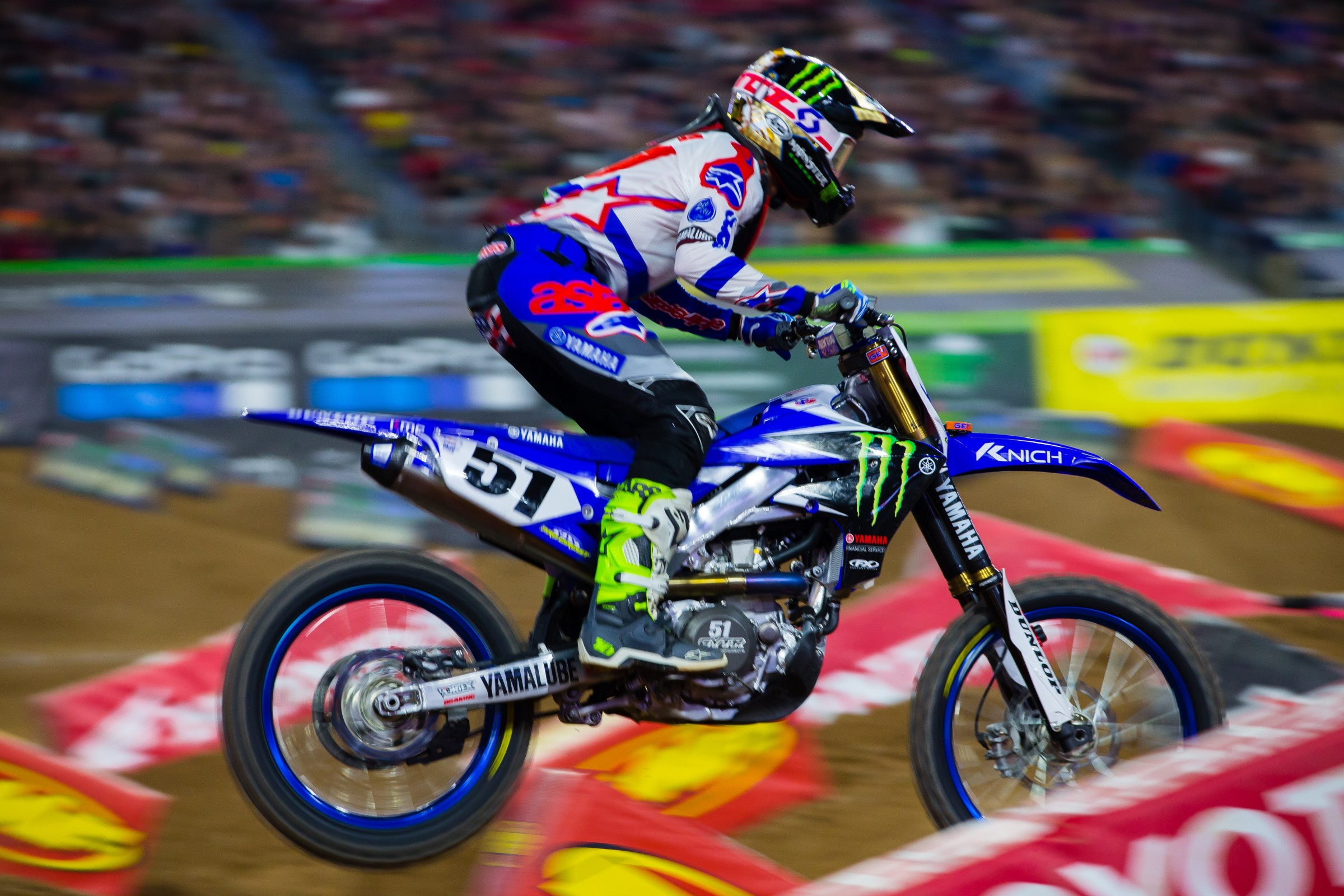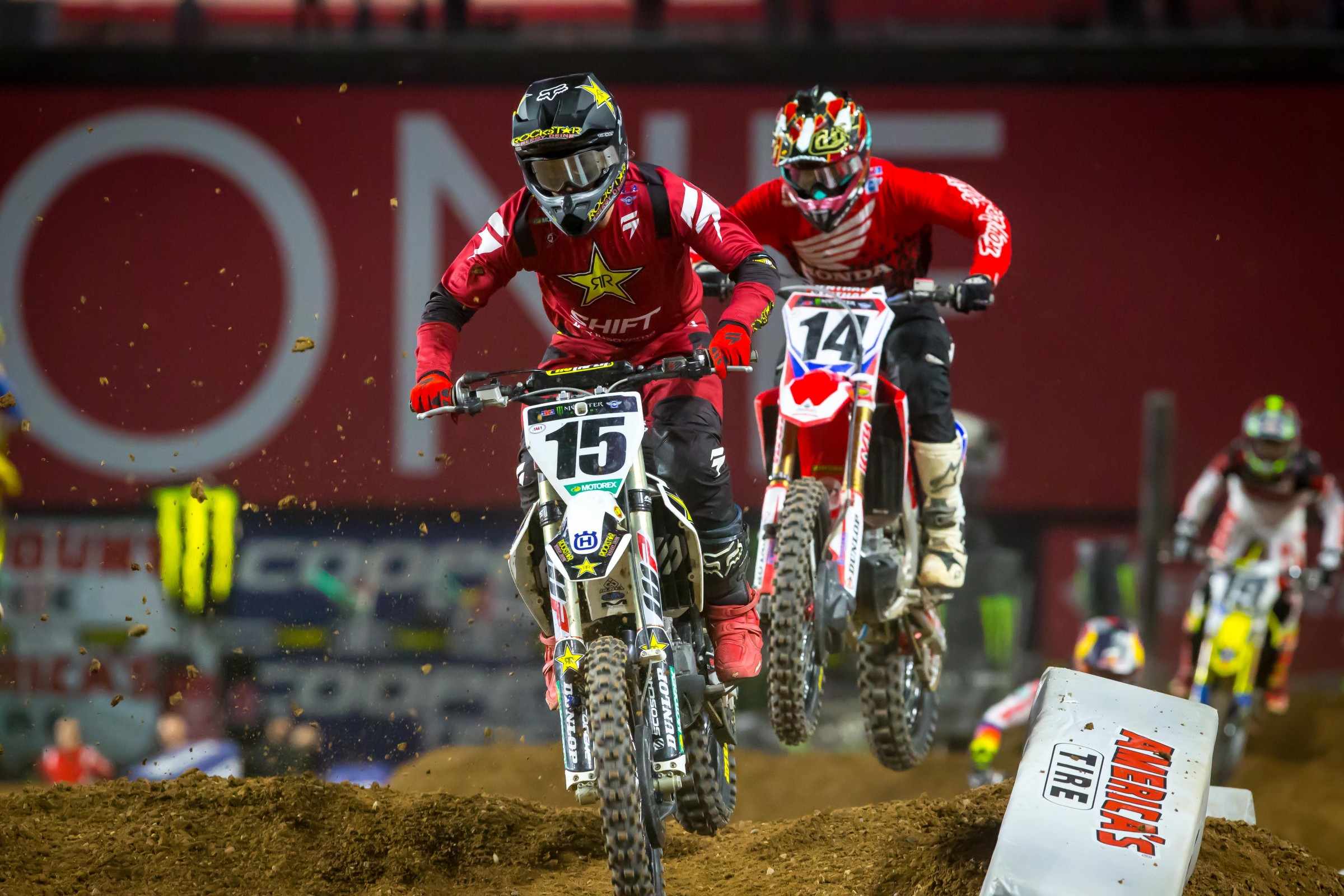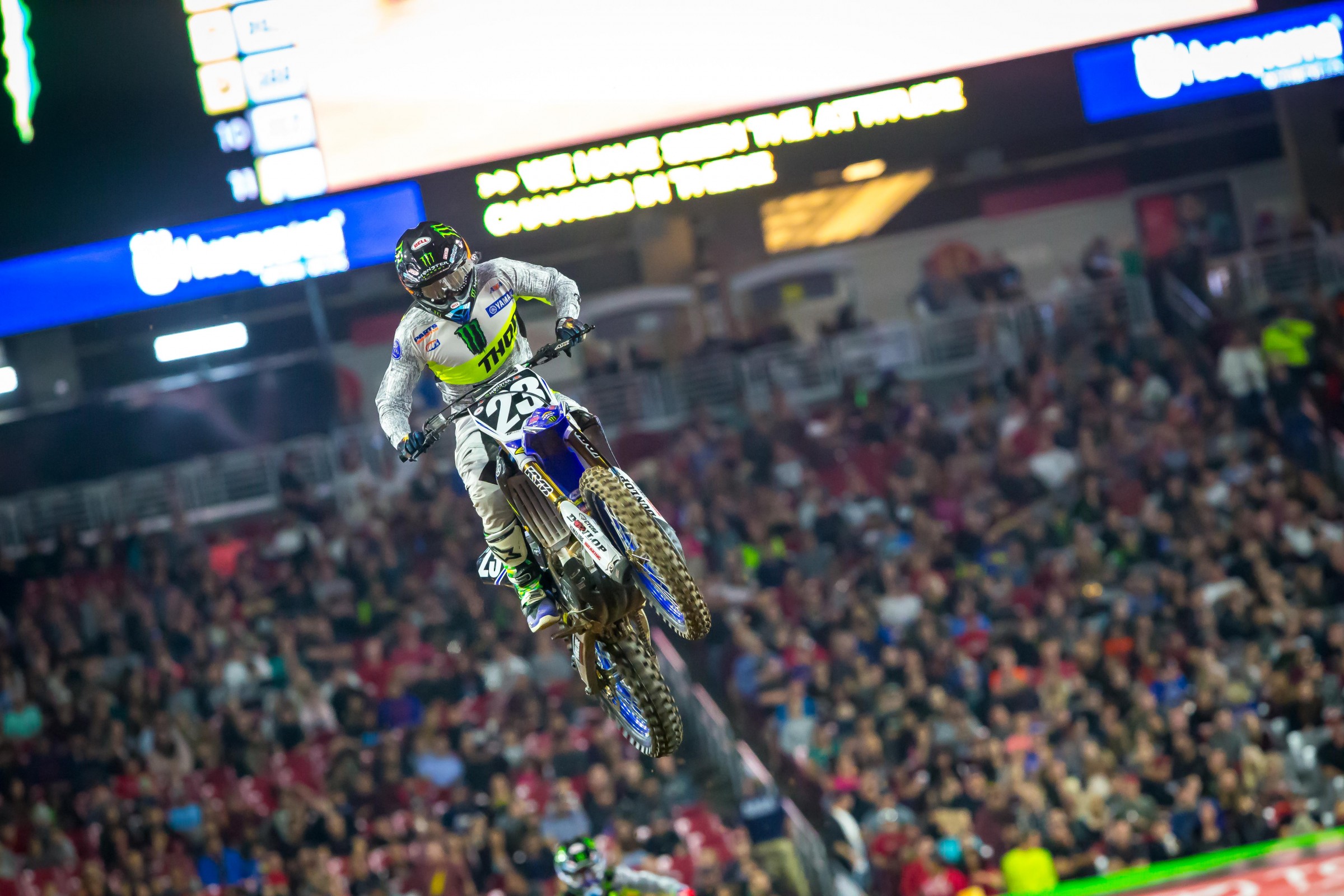1. Glendale featured big whoops and challenging rhythms, yet riders said it wasn't any more dangerous than Anaheim 2 because they don't like going wide-open fast into small whoops. What's scarier as a rider—pushing hard to make up time on a track without separation, or having to jump gnarly combos and skim deep whoops?
Jason Thomas: They are definitely different animals and challenge riders in different ways. I liked technical tracks because I felt like I was racing against myself, in a sense. If I got the track dialed in and could execute great laps, that would equal a great finish. On an easy track, so many things could invariably go wrong. Starts became so much more critical and passing became a violent affair. Everyone is forced to ride harder than they would like to when the track isn't challenging. Some of the biggest crashes we have seen aren't from some insanely technical section. Instead, many times they arise from an incredibly easy section that riders feel forced to over-ride. Dean Wilson's crash at A1 was a good example of that. It was a simple double that he tried to wheelie through instead of being forced to respect the obstacle. Technical sections force respect and keep riders on their toes.
Ryan Sipes: I always liked bigger, tougher tracks when I was racing. The problem with a track without separation is that everyone can go the same speed. So you have the top guys, who are normally faster, not able to pass a guy they would normally blow by. Now they have to push past 100 percent. When you’re already at the very limit of how fast that bike will go around the track, you resort to trying things you normally wouldn’t so you can make a pass. That is when the fit can hit the shan. The other problem with easy tracks is the sheer speed that the guys are carrying. When you don’t have to worry about timing that jump perfectly, or slow down to set up and make sure you hit the top of every whoop, you are going to be hauling the mail before you know it. More speed equals harder crashes.
David Pingree: There are some certain things that make a track safe and make it work for racing. I’m a big believer that speed is what gets riders hurt. Whoops can (and should) be big and technical, but they need to start right at the exit of the corner like they were in Glendale. When riders enter a set of whoops in fourth gear after a triple or rhythm section they have a head of steam going in. Regardless of their size, when it goes badly at that speed, riders are more likely to get hurt. Also, it is easier to keep a bike under control when you are trying to accelerate through whoops than it is coming it at Mach 1 with your hair on fire. As far as rhythm sections go, they need to be technical enough to make riders back out of the quickest way through once in a while and/or there needs to be multiple ways to jump through. When a track is too easy, the races become a follow-the-leader situation, so I prefer technical, slow tracks with plenty of 180-degree corners.
2. Okay, same thing. The theory is that easier tracks "keep the pack closer for better racing," but Glendale's track, which was tougher, offered better racing. So, which really offers better entertainment?
JT: Give me the tougher tracks every time. I love to see the world's best really taken to task. The skill sets of the elite are so refined and impressive that we often do a disservice to them with the lack of creativity in track design. There's no way to guarantee great racing like Glendale, but if I am forced to choose, I will take a demanding track versus an amateur day replica.
Sipes: I don’t think there's always a clear favorite. This time the tougher track was better, but I’ve also seen tracks so tough that the good guys lapped into the top ten because no one else could ride it. I think Glendale was a really good layout with just enough technicality to separate, but not alienate, the second tier of riders. Separation without alienation. I should coin that.
Ping: I would suggest that the theory of easier tracks making for better racing is inaccurate. When there is nothing to separate skill levels, good riders will push the envelope trying to get past and you have incidents like Dean Wilson at Anaheim. Deano was so desperate to get past a slower rider that he tried to pull a move that can only happen in a Mad Skills Motocross game on your best day. Dean was lucky that his injuries weren’t worse because the crash was ugly. Keep speeds low and open the turns up for more block-passing at low speeds.
3. Thoughts on Plessinger and McElrath's battle? (Can you tone it back to maybe 80 percent, Ping?)
JT: This wasn't a great look for AP. It was exacerbated by Shane's swapping down the entire rhythm section afterward. Plessinger had the pass made but Shane squared up the turn and pulled alongside over the triple. In an effort to seal the deal, Plessinger swerved right and forced Shane to either brake hard or crash, basically. It was a move that would have really upset me in my racing days, and if Shane had gone for the takeout after this, it wouldn’t have bothered me one bit . Aggressive moves beget more aggression. As long as that's understood and accepted, game on.
Sipes: Man, this one is hard. At first glance, it’s a crappy move, and one that could’ve caused an injury. But when I rewind and watch it again, Plessinger was just completing the pass. He had a wheel on him, so he moved over and shut the door. Finished it. I can see how McElrath could be mad, and I would be in that situation too, but in reality he had time to ease off the throttle and cede the position. He thought Plessinger would let off first, but Aaron called his bluff. Fair game.
Ping: This one pissed me off when I watched it on television. Aaron was the faster rider in Glendale, no question. But after he made the pass on Shane in the turn, McElrath cut down and tried to repass him down the next straight. Plessinger looked over at him off the triple and then darted to his right when he landed. The move was so abrupt that it caught McElrath off guard and he nearly went down.
Aaron said that it was because they both scrubbed different directions and it sent them toward each other. I don’t buy that. Plessinger obviously wanted to move over and block Shane from sneaking back to the inside in the following turn, and he just moved over too much and too quickly. There is nothing wrong with blocking a line, but you have to exercise a certain amount of tact so you don’t get other riders, or yourself, hurt in the process. Had he moved right a little easier, he would still have shut the line down, but without risking taking each other out. I don’t think this was a malicious move on the part of Plessinger and I was happy to hear that he and Shane talked it out and everything is all good between them.
This West Coast title chase is going to be so good down the stretch. Plessinger, McElrath, and Cianciarulo are three of the nicest guys in the pits (another thing that made this move so odd) and they all have unique and distinct personalities. These are honestly my three favorite riders in our sport right now. Watching the press conference with this trio excited me for the future of our sport; it was the most honest and intriguing group of interviews I’ve seen in a long time. Add Savatgy to the mix with some appearances by the GEICO Honda boys and it’s anybody’s guess who is going to win on any given weekend.









